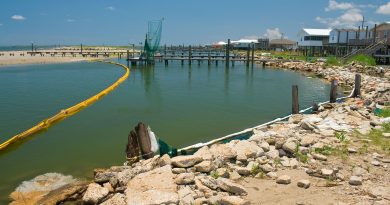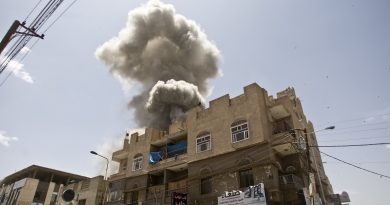How Far Did Obama’s Pivot to Asia Get?
By Anthony Tokarz
Staff Writer
Six years ago, a summit of regional powers in Hanoi, Vietnam became host to the birth of an American foreign policy initiative that overturned 234 years of precedent. Secretary of State Hillary Clinton stood before the nations of Southeast Asia and declared that the United States had a “national interest” in maintaining the rule of international law in the region, and especially within the contested islands of the South China Sea. Thus, the United States became party to the disputes of its allies in the region, initiating the Obama administration’s pivot to Asia.
One year later, Secretary Clinton reaffirmed her commitment to the Asia-Pacific region and laid out the administration’s nascent pivot strategy in Foreign Policy magazine, writing that within “the next 10 years, we need to be smart and systematic about where we invest time and energy, so that we put ourselves in the best position to sustain our leadership, secure our interests, and advance our values.”
Was the administration successful in sustaining American leadership in the Asia Pacific? The Diplomat reports that increased U.S. attention to the region has comforted and emboldened smaller nations, who see in the U.S. presence a guarantee of regional security and stability. As a result, they have acted more aggressively in asserting their interests against larger powers — particularly, China.
This has created two risks: First, it aggravates uncertainty about states’ intentions, creating incentives for escalation and brinkmanship; second, it threatens the United States because its emboldened allies will expect military aid and diplomatic assistance.
The latter problem creates a political risk at home as well, for many politicians and citizens alike believe that the U.S. has overstretched its resources and must pull back. Such views, of course, have made possible the rise of isolationist figures, most notably Donald Trump. Though the United States has not yet had to back its rhetoric with action beyond its perennial military exercises, the possibility looms large before many a concerned American, which could undermine popular support for the pivot.
Beyond hard power, the Obama administration has sought to advance most of its interests in the Asia-Pacific under the aegis of the Trans-Pacific Partnership (TPP) trade deal. The deal, which seeks to unite Pacific Rim nations — with the exception of China — into a single market reminiscent of the European Union, contains many statutes that provide for new or improved controls on Pacific Rim security and the rule of international law, especially intellectual property law.
The TPP had enjoyed broad political support within Congress prior to this election season, when the populist movement that fueled the rise of Sen. Bernie Sanders of Vermont in the Democratic Party and of Mr. Trump in the Republican Party began to take issue with an agreement that it denounced as “the most brazen corporate power grab in American history.” Politicians from both parties have since reneged on their support for the deal for fear of alienating their voter bases and making enemies of the American people. Even Democratic presidential nominee Hillary Clinton, who had encouraged and promoted the deal throughout her tenure as Secretary of State, has expressed reservations about its passage.
Without the TPP, the United States must rely primarily on its relationships with allies in the region to open new markets and promote security. The Wall Street Journal reports that White House officials have said the success of Obama’s Asia policy depends on the passage in Congress of the trade deal, without which U.S. influence in the region would “significantly diminish.” But at this juncture where supporters of the deal are growing fewer, the administration has limited options.
The promotion of American values, however, has proven the most problematic of all. China has cracked down on civil rights and religion within its borders for fear of “creeping Islam” or subversive Christianity. North Korea has launched yet another nuclear weapons test, this time demonstrating that it can successfully mount its warheads upon short- and medium-range ballistic missiles. North Korea still refuses to deny or apologize for its nuclear program, demonstrating the limits of U.S. power over the hermit state, as well as the disinclination of China to exert pressure on its recalcitrant ally.


